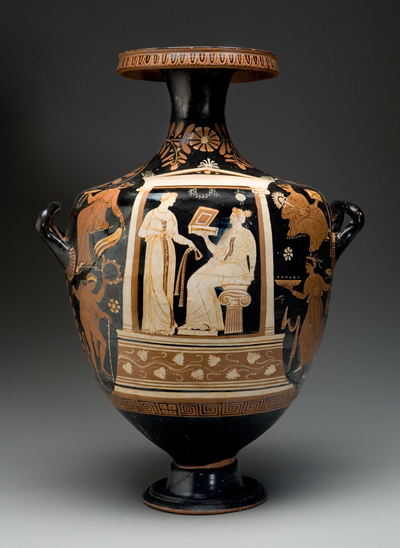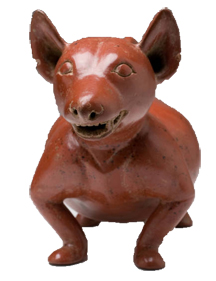

Greek Art (c. 900 BCE - 30 BCE)
The funerary hydria is a vessel used to hold and carry water or wine. This vessel would have been placed inside the tomb or on the grave of a deceased person. Only women were depicted on hydria-shaped vessels, since they were the water-carriers in ancient Greece. This type of vessel was painted in the red figure technique, which was developed in Athens between 700-600 BCE. This means that the decorator of this vase covered the background in black slip (a water and clay mixture used on pottery) and then filled in details of the figures' faces and clothes. The figures retained the color of the clay to portray their skin. Potters and painters usually signed these objects, and patrons' names were sometimes included as well.
The deceased woman is depicted on the front of this hydria. She is seated and holding an open box. Her maid stands before her holding a ribbon. The women on the sides represent visitors to the grave of the deceased. They carry gifts to leave at the tomb, such as wreaths, a fan, a box, and more ribbons. Why do you think these objects would have been important or symbolic to this woman? How is this practice similar to the way we decorate the graves of loved ones today?
Unidentified Maker, Greek: Follower of the Varrese Painters
25 inches H; 18 inches W; 14 inches D
Gift of the Ball State University Foundation
1995.015.000
384-322 BCE The Greek philosopher and scientist Aristotle lives.
356-323 BCE Alexander the Great of Greece lives.
28-75 CE Buddhism is established in China and becomes a major world religion.
30 CE The death of Jesus and emergence of Christianity.




